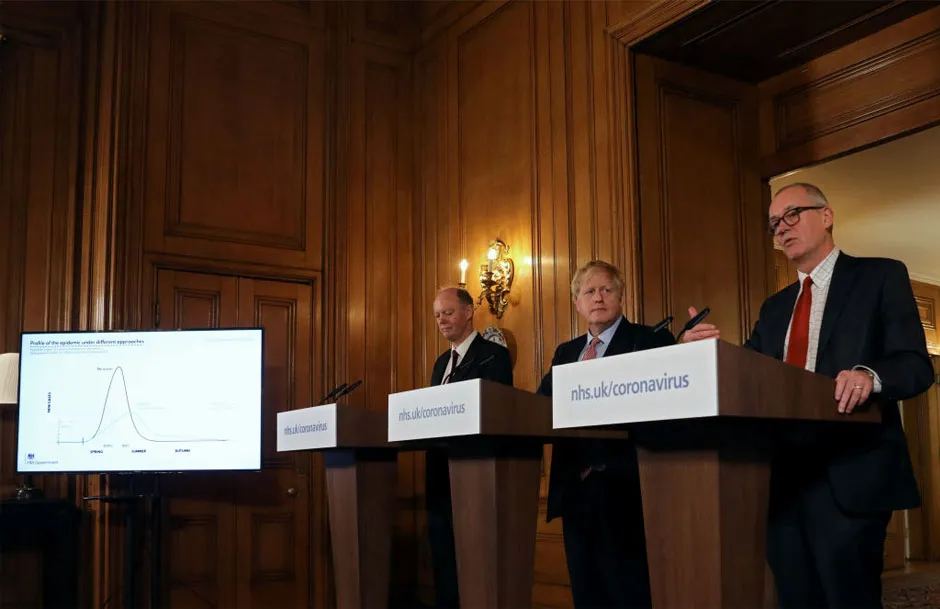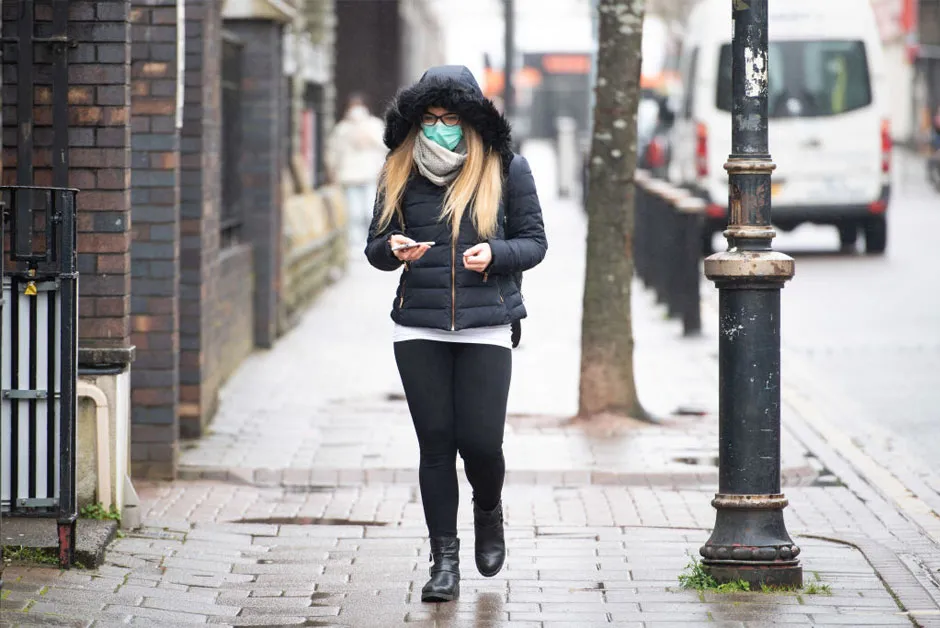On 13 March, as COVID-19 began to sweep across the UK, Sir Patrick Vallance – the UK government’s Chief Scientific Advisor – told BBC Radio 4’s Todayprogramme that, in order to control the impact of the virus, the country would need to build up “some degree of herd immunity”. In another interview for Sky News, he said that about 60 per cent of the population would need to become infected for this to happen.
His comments soon came under fire. Over 500 scientists from UK universities wrote to the government, saying that “going for herd immunity at this point” will risk “many more lives than necessary.”
If COVID-19 – the disease caused by the coronavirus SARS-CoV-2 – were to have an estimated fatality rate of around one per cent and 60 per cent of the population became infected (around 40 million people), that could equate to hundreds of thousands of deaths.
Read the latest coronavirus news:
- Oxford coronavirus vaccine shows 'strong antibody and T-cell immune response'
- Synairgen drug 'prevents 79 per cent' of coronavirus cases progressing
- Physical distancing and closures 'a key component' in decreasing number of new cases
What is herd immunity?
Herd immunity is what happens when enough people are immune to a disease (in this case, COVID-19) for the chains of transmission to be broken. As more people become immune, infected people are less able to pass on the disease, and the spread of the disease slows down. This provides an indirect form of protection for those who are not immune.
Usually, individuals become immune through vaccination. But there isn’t yet a vaccine for coronavirus, so herd immunity could only currently be achieved if enough people contract the disease and recover, developing an immunity to it in the process.
Is herd immunity the goal?
The Department of Health and Social Care has since clarified that herd immunity is not part of the UK’s action plan to tackle coronavirus, but is “a natural by-product of an epidemic”.
“Our aims are to save lives, protect the most vulnerable, and relieve pressure on our NHS,” said a spokesperson, words that were echoed by Health Secretary Matt Hancock in The Telegraph: “We have a plan, based on the expertise of world-leading scientists. Herd immunity is not a part of it. That is a scientific concept, not a goal or a strategy.”
Why would 60 per cent of the population need to catch coronavirus?
So where did the 60 per cent figure come from? And will we still experience the positive effects of herd immunity at some point?
The ease with which a disease spreads – how infectious it is – is measured using the ‘reproduction number’, R0, which is the average number of people who are expected to catch the disease from a single infected person. In March, the estimated R0 forCOVID-19 was estimated to be around 2-3. Flu, in comparison, has a R0 of 1.3, while measles has a R0 as high as 18.

The proportion of the population needed to become immune to achieve herd immunity (the ‘herd immunity threshold’) is calculated by 1 – (1/R0). For the coronavirus, this gives the threshold of 60 per cent that was quoted by Vallance (using a R0 value of 2.5).
Can we reduce the number of people who catch it?
Crucially, though, a disease’s infectiousness isn’t set in stone [it currently stands between 0.7-0.9 in the UK as of 19 July]. Measures can be taken to make it harder for a disease to spread (reducing the value of R0), and this, in turn, reduces the herd immunity threshold. A few days after Vallance’s comments, Boris Johnson introduced new guidelines that will help to do this, including stopping non-essential contact with others and non-essential travel.
“All the measures that we have put in place will reduce R0,” says Prof John Edmunds, an infectious disease expert at the London School of Hygiene and Tropical Medicine. Edmunds is a member of the Scientific Pandemic Influenza Group on Modelling (SPI-M), which is one of the groups providing advice to the government during the epidemic.
“Exactly by how much is hard to say at this time, as we have never tried these measures before. But overall, we would expect them to reduce R0 to a low level – even to below 1. The aim is to try and reduce transmission and minimise the size of the epidemic.”
If this number is kept low for long enough, then fewer people will need to become immune to reach the herd immunity threshold, and the epidemic will slow to a halt. But how long it would take to reach this point is difficult to predict.
Would herd immunity stop the epidemic?
Edmunds notes that, even once herd immunity has been reached, the epidemic won’t suddenly stop, as there will still be infectious people generating new cases. “So one other important strategy is to lower the number of infectious individuals so it is very low at the point when the epidemic peaks,” says Edmunds.
There are also currently three big unknowns when it comes to the coronavirus, says Dr Jeremy Rossman, Honorary Senior Lecturer in Virology at the University of Kent. And each of these factors will affect the disease’s future infectiousness.
Read more fromReality Check:
- COVID-19: Have we been treating the disease wrong?
- Coronavirus: Will face masks reduce transmission?
- Is the coronavirus airborne?
First of all, we don’t yet know whether the coronavirus will track our seasons, like the flu, or be fairly constant all year round. If the coronavirus does prefer colder weather, like flu, then the epidemic could gain a second wind during the Northern Hemisphere winter months.
Secondly, we don’t know how much this coronavirus will mutate over time. The viruses that cause flu are constantly mutating, which is why people need annual vaccinations to protect against whichever are the most prevalent strains that year.
“The coronavirus is probably mutating at a slower rate,” says Rossman, “but if it keeps circulating, then we’ll see changes. The question is what those changes will do: they could make the virus better at evading our immune systems, for instance, or more easily transmitted.”

And thirdly, we don’t know how long those who are infected are subsequently immune for. Some other viruses in the coronavirus family, such as those that cause the common cold, only provide immunity for around three months or so.
“There’s evidence for short-term immunity [after contracting COVID-19],” says Rossman, “but we just don’t have the data yet to know whether it provides long-term immunity.”
Rossman estimates that we’d need to be immune to the coronavirus for at least a year, possibly two, in order for the population to build up herd immunity. If this isn’t the case, he says, our best hope for herd immunity might be a coronavirus vaccine, although this is still believed to be at least a year away.
Read more about a coronavirus vaccine:
- How are scientists developing a coronavirus vaccine?
- Coronavirus vaccines: Where are we now?
- COVID-19 vaccine ready in first half of 2021 if trials go 'really well'
What's the way forward?
For now, Rossman says that the best actions that governments can take are to keep the public informed, to keep testing people, and to reduce the spread by clamping down on social contact.
In fact, Rossman still thinks there’s a chance that we could control the epidemic before we need the full protection of herd immunity. “China’s a great example: the virus didn’t create herd immunity, but they’ve managed to contain the outbreak and stop any new cases from spreading around the population.”
“If we can do it there, we can do it around the world. It’ll be difficult, but I think it’s possible.”
- This article was first published in March and has been updated
Visit the BBC's Reality Check website at bit.ly/reality_check_ or follow them on Twitter@BBCRealityCheck